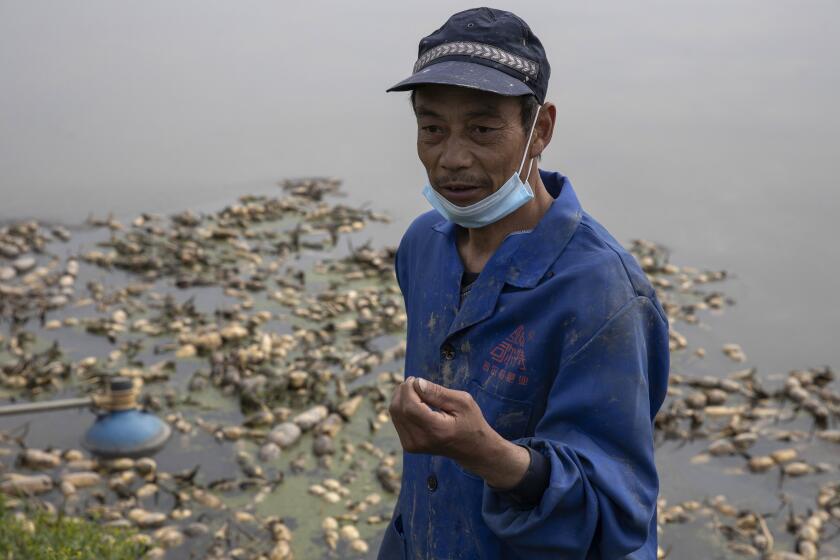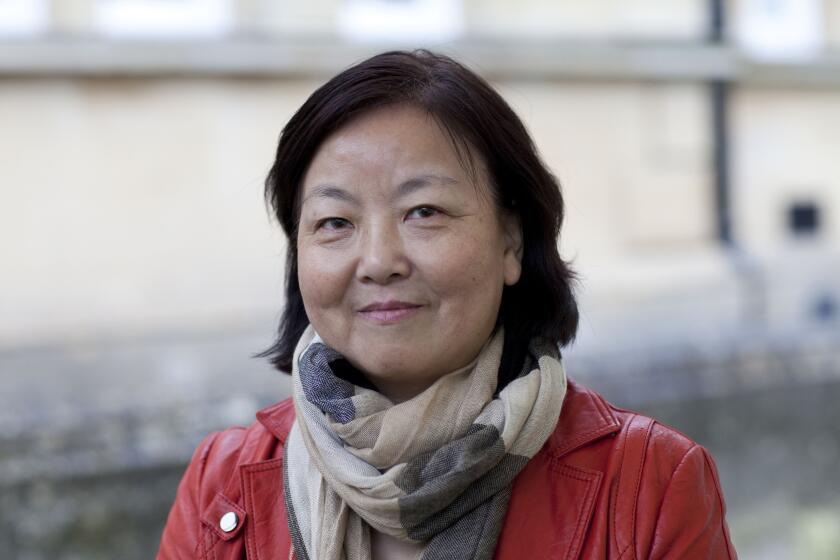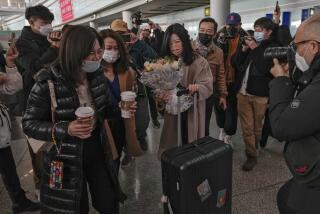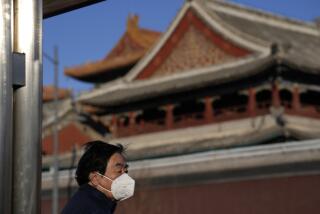China’s coronavirus pandemic epicenter Wuhan ends 76-day lockdown

- Share via
WUHAN, China — The lockdown that served as a model for countries battling the coronavirus around the world has ended after 11 weeks: Chinese authorities are allowing residents of Wuhan to once again travel in and out of the sprawling city where the pandemic began.
As of just after midnight Wednesday, the city’s 11 million residents are now permitted to leave without special authorization as long as a mandatory smartphone application powered by a mix of data-tracking and government surveillance shows they are healthy and have not been in recent contact with anyone confirmed to have the virus.
The occasion was marked with a light show on either side of the broad Yangtze River, with skyscrapers and bridges radiating animated images of health workers aiding patients, along with one displaying the words “heroic city,” a title bestowed on Wuhan by president and Communist Party leader Xi Jinping. Along the embankments and bridges, citizens waved flags, chanted “Wuhan, let’s go!” and sang a cappella renditions of China’s national anthem.
“I haven’t been outside for more than 70 days,” said an emotional Tong Zhengkun, who was watching the display from a bridge. Residents in his apartment complex had contracted coronavirus, so the entire building was shut down. He couldn’t go out even to buy groceries, which neighborhood workers brought to his door.
“Being indoors for so long drove me crazy,” he said.
It didn’t take long for traffic to begin moving swiftly through the newly reopened bridges, tunnels and highway toll booths, while hundreds waited for the first trains and flights out of the city, many hoping to return to jobs elsewhere.
China is easing coronavirus travel controls, but crops deemed nonessential wither while farmers await permission to move them to markets.
Restrictions in the city where most of China’s more than 82,000 virus cases and more than 3,300 deaths were reported have been gradually relaxed in recent weeks as the number of new cases steadily declined. The latest government figures reported Tuesday listed no new cases.
While there are questions about the veracity of China’s count, the unprecedented lockdown of Wuhan and its surrounding province of Hubei has been successful enough that countries around the world adopted similar measures.
“The people in Wuhan paid out a lot and bore a lot mentally and psychologically,” resident Zhang Xiang said. “Wuhan people are historically famous for their strong will.”
During the 76-day lockdown, Wuhan residents had been allowed out of their homes only to buy food or attend to other tasks deemed absolutely necessary. Some were allowed to leave the city, but only if they had paperwork showing they were not a health risk and a letter attesting to where they were going and why. Even then, authorities could turn them back on a technicality such as missing a stamp, preventing thousands from returning to their jobs outside the city.
Residents of other parts of Hubei were allowed to leave the province starting about three weeks ago, as long as they could provide a clean bill of health.
Prevention measures such as wearing masks, temperature checks and limiting access to residential communities will remain in place in Wuhan, which is the capital of Hubei.
In an editorial, the ruling Communist Party’s flagship People’s Daily warned against celebrating too soon.
“This day that people have long been looking forward to and it is right to be excited. However, this day does not mark the final victory,” the paper said. “At this moment, we still need to remind ourselves that as Wuhan is unblocked, we can be pleased, but we must not relax.”
In anticipation of the lockdown’s lifting, SWAT teams and staff in white hazmat suits had patrolled outside the city’s Hankou railway station, while guards attended a security briefing under the marble arches of its entrance.
Tickets for trains out of Wuhan to cities across China already were advertised on electronic billboards, with the first train leaving for Beijing at 6:25 a.m. A line designated for passengers headed to the capital was roped off, while loudspeakers blared announcements about pandemic control measures, such as keeping safe distances and wearing masks.
Fang Fang, a novelist from Wuhan, has written an online diary every day under lockdown since Jan. 25. Millions of Chinese readers wait for her updates every night, hungry for an honest voice. Some of her entries are censored by the morning.
Wuhan is a major center for heavy industry, particularly autos, and while many major plants have restarted production, the small- and medium-sized businesses that provide the most employment are still hurting from both a lack of workers and demand. Measures are being instituted to get them back on their feet, including 20 billion yuan ($2.8 billion) in preferential loans, according to the city government.
China blocked people from leaving or entering Wuhan starting Jan. 23 in a surprise middle-of-the-night announcement and expanded the lockdown to most of the province in succeeding days. Train service and flights were canceled and checkpoints were set up on roads into the central province.
The drastic steps came as the coronavirus began spreading to the rest of China and overseas during the Lunar New Year holiday in late January, when many Chinese travel.
The exact source of the virus remains under investigation, though it is thought to be linked to an outdoor food market in the city.
In preparation for the end of the lockdown, Party Secretary Wang Zhonglin, the city’s highest-ranking official, inspected the city’s airport and train stations Monday to ensure they were ready. The city must “enforce prevention while opening up, maintain safety and orderliness and the assurance of stability,” Wang said.
Mission one: to make sure the epidemic doesn’t resurge, he said.
More to Read
Sign up for Essential California
The most important California stories and recommendations in your inbox every morning.
You may occasionally receive promotional content from the Los Angeles Times.















